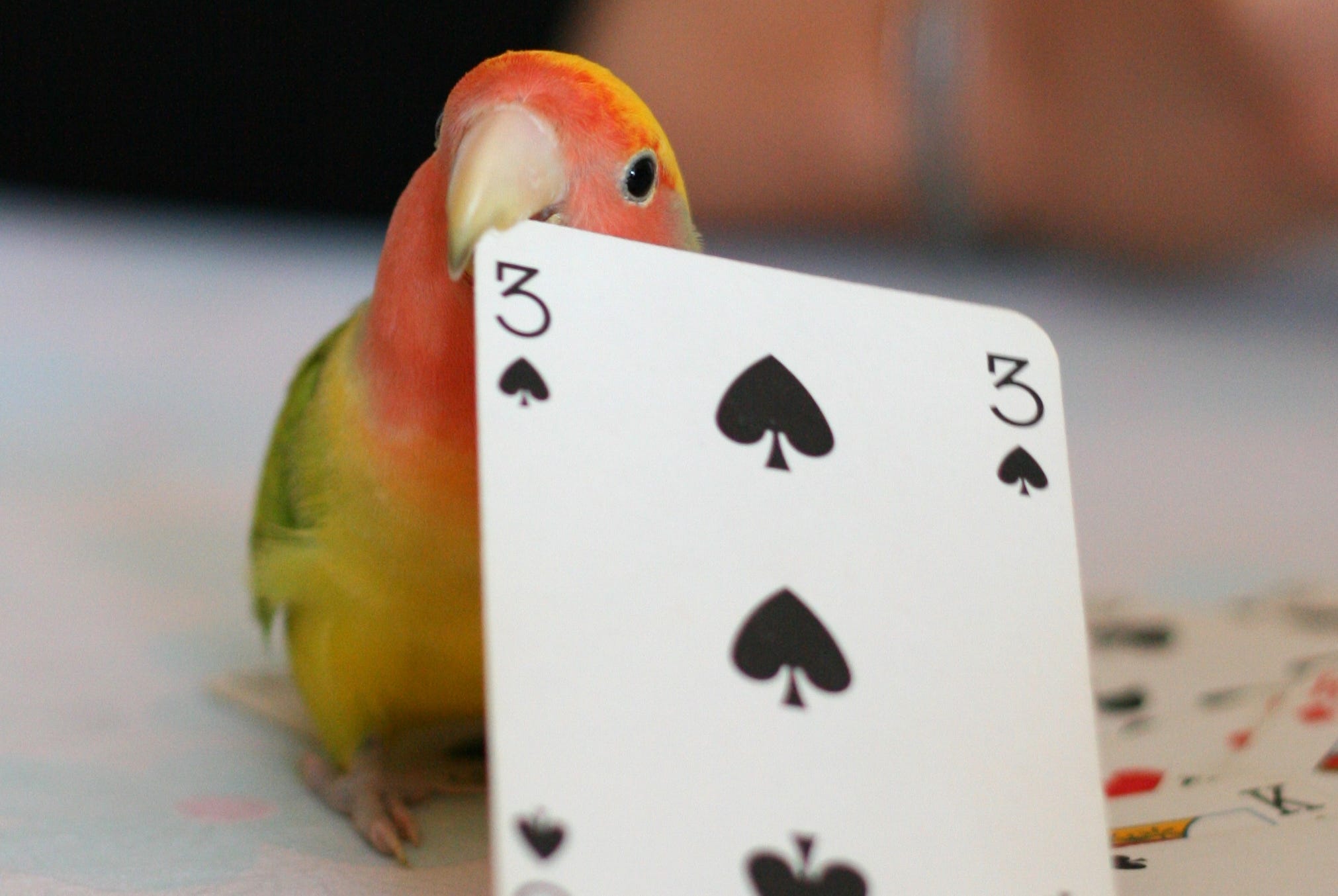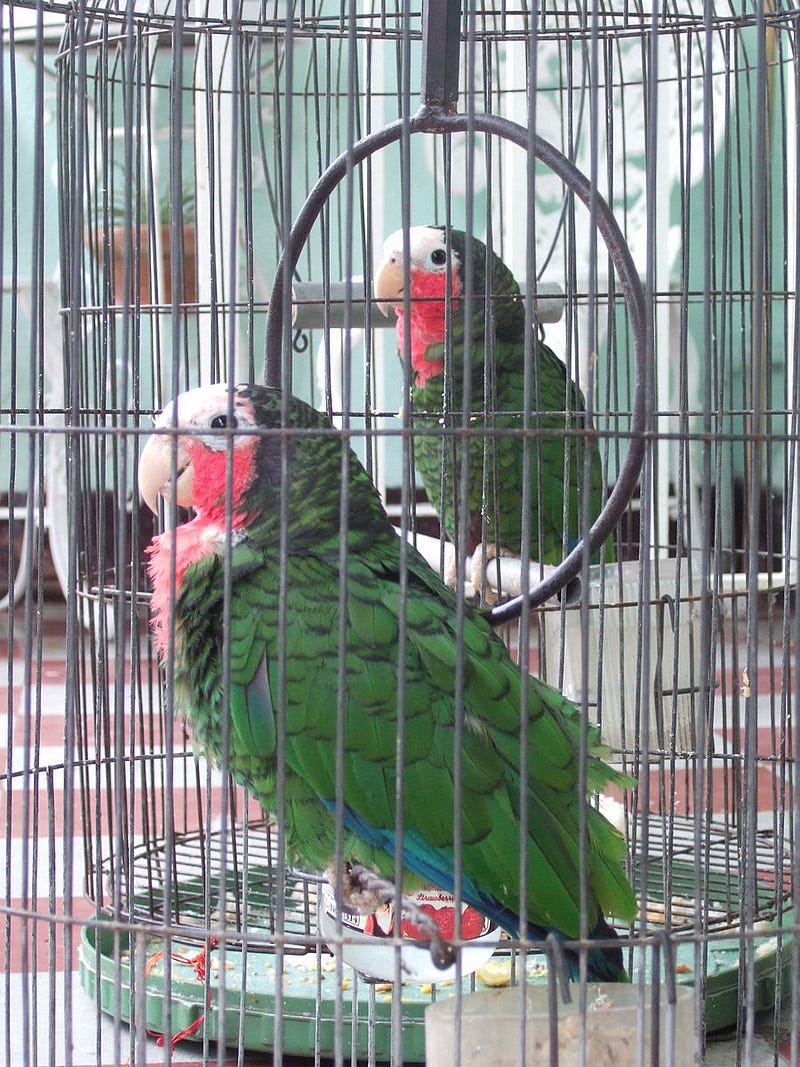The Dire Consequences of a Lack of Play

By now, it should be evident from the earlier stories this season that play is an integral part of the developmental process, especially for social species. One group that truly embodies its necessity are parrots, approximately 400 species of birds that make up the taxonomic Order Psittaciformes. Along with corvids, which we discussed earlier, they are considered the most intelligent birds. Both groups display a knack for problem solving and an ability to mimic sounds, including human speech.
Wild parrots are social animals and their development reflects this. Some species will even group together multiple broods of offspring to form a larger group or creche. The young parrots learn foraging techniques from the adults while engaging in play fights and predator avoidance practice with each other. We’ve already explored the benefits of this type of behavior in earlier stories, but parrots can also give us a glimpse of the opposite extreme: the detrimental effects caused by its absence. We can sometimes see this when they are kept as pets.
Because of their beauty and ability to ‘talk’, parrots have been kept as companion animals for centuries, with the keeping of some species dating back to the time of classical antiquity (~700 BCE to ~500 CE). However, unlike the dogs and cats from last week, they were never fully domesticated. Even modern pet parrots are still wild-caught or captive-bred from wild stock. There are no significant genetic differences between these pet parrots and their wild counterparts.

Keeping a young parrot in a cage all day will not be good for its development, even if it is provided adequate food and water. This is true for the bird’s social skills as much as for its physical condition. Even ‘well-adjusted’ pet parrots are known for screaming, chewing, biting, and causing general destruction. Growing individuals require large amounts of attention and interaction, much in the same way as a human toddler would. Failure to receive this can lead to a variety of antisocial and even self destructive behaviors. These can include large-scale feather plucking or other forms of self mutilation.
A lack of play doesn’t just stunt an individual’s development, it can lead to repetitive and dangerous (both for self and others) behaviors that become difficult to break habits. This can even happen in adult parrots that are forgotten or whose owners experience tragedy. Larger species can easily outlive their initial owners and so some amount of behavioral problems are frequent among captive parrots. The screaming, swaying, or plucking behaviors are rarely seen among wild individuals, but common in captive ones.
Of course, parrots are not the only captive animals that can exhibit these symptoms. The importance of socialization an enrichment has slowly been recognized for a wide variety of captive species. However, there are few groups in which play can be considered such an integral part of their healthy development. It can be tempting to dismiss certain play behaviors as frivolous, but this becomes more difficult as one sees just what happens to an individual that is denied such an opportunity.
Fortunately, parrots are quite flexible in their choices of play behavior. Even their mimicry of human speech may contain an aspect of this, though its ultimate purpose is still debated and not fully known. It may seem playful because the mimicry is often imperfect, but this is mostly due to the anatomical differences between species (birds do not possess vocal cords and so must produce sounds using their throat muscles).
I hope you are continuing to enjoy Season 6 and our exploration of play. Like so many things in nature, there are layers upon layers of complexity that one can peel back, like a metaphorical onion. As always, let me know what you like about each story as well as what topic ideas you would like to see me cover in future seasons of Nature Stories.